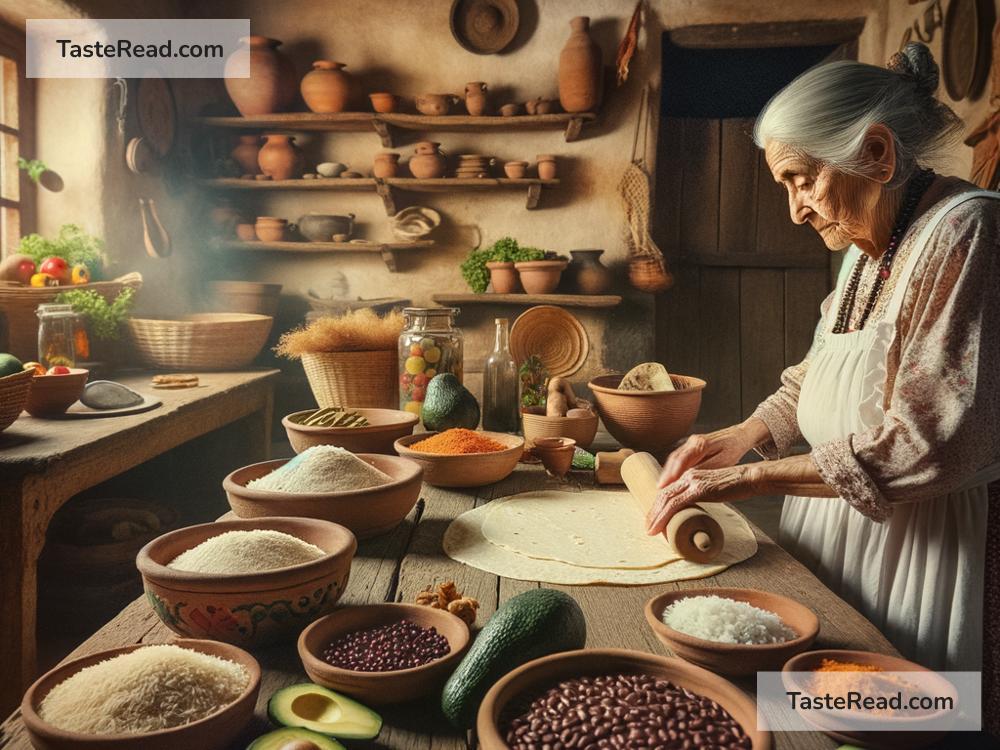The Origins of the First Burrito: A Journey Through Folklore
Mexican food is loved all around the world. From tacos to enchiladas, each dish has a unique history. But one food item stands out for its simplicity and flavor—the burrito! This rolled tortilla stuffed with delicious ingredients is a favorite for many. While we often think of the burrito as a modern snack, its roots go way back. In fact, some fascinating folklore surrounds the origins of the very first burrito. Let’s take a tasty journey through history.
What is a Burrito?
Before we dive into the legends, let’s define what a burrito is. A burrito is made by wrapping a flour tortilla around fillings like rice, beans, meat, cheese, vegetables, and sometimes salsa. Some burritos are small and simple, while others are large and packed with all kinds of ingredients. The word “burrito” means “little donkey” in Spanish, but why is it named after a donkey? That’s where the folklore begins!
The Tale of Juan Mendez and His “Little Donkey”
One popular story takes us to Ciudad Juárez, a city in northern Mexico near the U.S. border. According to this legend, there was a street vendor named Juan Mendez who sold food during the Mexican Revolution in the early 1900s. Juan needed a way to keep his food warm while transporting it to hungry customers. He came up with the idea of wrapping the food in large flour tortillas.
He would pack his tortillas stuffed with beans, rice, and meat into a bag carried by his donkey. When people bought the wrapped food, they started calling it “burritos,” or “little donkeys,” because of the animal Juan used to deliver them. Over time, the name stuck, and what started as a quick solution became a popular dish enjoyed by millions!
The Mysterious Origins of the Burrito Name
While the Juan Mendez story is heartwarming, historians aren’t completely sure this is how burritos got their name. Another theory suggests the name “burrito” comes from the idea that the rolled tortilla looks like a donkey’s ear or pack roll—a bundle carried by donkeys. Whether the name came from Juan’s donkey or their appearance, it’s clear that donkeys played a role in inspiring the burrito as we know it today.
Food for Farmers and Travelers
There’s more folklore about how burritos may have initially become popular. Some stories say that laborers, farmers, and travelers in rural Mexico were the first to enjoy them. In the early 19th century, flour tortillas had become common in northern Mexico, especially in regions like Sonora. Flour tortillas are sturdier than corn tortillas, which makes them perfect for holding fillings.
Farmers and travelers needed filling meals that were easy to eat on the go. They began wrapping food like beans, meat, and chili sauce in tortillas to serve as portable meals. This practical, mobile type of food eventually evolved into the burrito!
Ancient Origins: Could Burritos Go Back Even Further?
While burritos as we know them today are relatively modern, their concept might go back much further. Wrapping fillings in tortillas is an ancient Mexican food tradition. Some believe that generations before the arrival of Europeans to the Americas, Indigenous people were using corn tortillas to hold foods during meals or while traveling. Although those ancient versions weren’t made with flour tortillas and weren’t called burritos, the idea of using tortillas as a convenient wrapper may have inspired later creations.
Burritos Cross the Border
Another part of burrito history involves their journey beyond Mexico. While burritos are most popular in northern Mexico, they started becoming well-known in the United States during the mid-20th century. Migrants brought their delicious recipes with them across the border. As Mexican restaurants became more popular, burritos began appearing on menus in the U.S.
Tex-Mex cuisine in particular embraced burritos, giving them new twists and flavors. Today, you’ll find burritos everywhere, from food trucks to fancy restaurants. And they’ve even gone global—countries around the world have their own versions of burritos, sometimes stuffed with local spices and ingredients.
The Modern Burrito Explosion
The burrito’s simple design allows for endless creativity. Over time, new styles of burritos emerged. There’s the classic Mexican burrito, which is smaller and often stuffed with just a few ingredients like beans and meat. Then there’s the massive “Mission-style” burrito, which originated in San Francisco during the 1960s. These burritos are large, fully packed, and often wrapped in foil to make them easy to carry.
Traditional or modern, burritos are now extremely popular. Fast-food chains like Chipotle and Taco Bell offer quick burrito options, while local taquerias keep the traditional flavors alive. There are even breakfast burritos, sushi burritos, and vegan burritos that appeal to people with different tastes and dietary needs.
Final Thoughts: A Dish of Humble Beginnings
While no one knows exactly when or where the first burrito was made, the folklore surrounding its creation adds a layer of charm to this beloved food. Whether it began with Juan Mendez and his little donkey or with farmers using tortillas for convenient meals, the burrito is a product of ingenuity and passion for delicious, practical food.
Today, the burrito continues to grow in popularity, feeding people across the globe with its filling and flavorful appeal. So next time you bite into a burrito, remember its humble origins—a tale of donkeys, revolution, and the desire for a warm, satisfying meal. Truly, the burrito is more than just food—it’s a story wrapped up in a tortilla!


